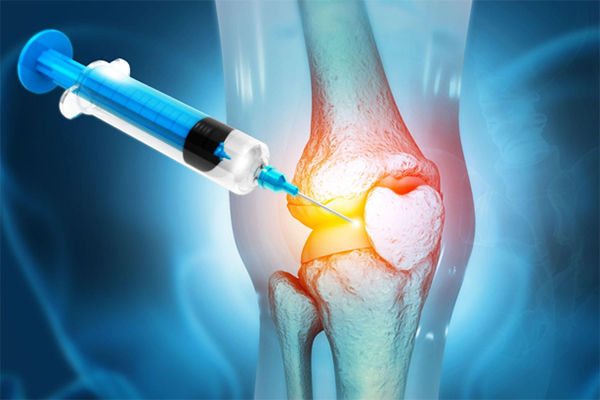PRP Therapy: The Healing Science Inside Your Own Blood
- LV Wellness , Mukilteo, WA.
- Jul 23
- 4 min read

Platelet-Rich Plasma (PRP) therapy is quietly transforming modern medicine—not with synthetic drugs or surgeries, but with something much simpler: your own blood.
From high-performance athletes to people managing chronic pain, hair loss, or aging skin, PRP is showing remarkable results in healing and regeneration. Backed by a growing body of scientific research, this treatment is a powerful example of how the body can often repair itself—when given the right tools.
What Is PRP, Really?
At its core, PRP is a concentrated form of platelets taken from your own blood. While platelets are usually associated with clotting, they also contain growth factors—tiny signaling proteins that promote healing, tissue repair, and cellular regeneration.
The process is simple:
A small amount of your blood is drawn.
It’s spun in a centrifuge to separate platelets from other blood components.
The concentrated platelet-rich plasma is injected into the area that needs healing—whether that’s a joint, scalp, or skin.
These growth factors act like biochemical messengers, calling your body’s healing systems into action.

How Does PRP Work?
PRP delivers a high concentration of platelets directly to injured or aging tissues. These platelets then release growth factors such as:
PDGF (Platelet-Derived Growth Factor): Stimulates cell growth and new blood vessel formation
TGF-β (Transforming Growth Factor Beta): Promotes tissue repair and modulates inflammation
VEGF (Vascular Endothelial Growth Factor): Helps regenerate blood supply to damaged tissues
By localizing these compounds in a single area, PRP essentially amplifies the body's own healing mechanisms.
“PRP is like giving your body a focused dose of its best natural medicine.”
Where PRP Is Making a Difference
While PRP is still being researched in some areas, a number of clinical applications are already showing strong promise.
Proven and Promising Uses Include:
Orthopedic Injuries PRP is commonly used to treat joint pain, tendonitis, and cartilage damage. A 2013 study in The American Journal of Sports Medicine found PRP injections to be significantly more effective than hyaluronic acid for relieving knee osteoarthritis pain. (Patel S. et al., 2013)
Hair Restoration Patients with androgenetic alopecia (pattern hair loss) have seen increased hair density and thickness with PRP. A 2015 study in Dermatologic Surgery showed substantial hair regrowth after three PRP sessions. (Gentile P. et al., 2015)
Aesthetic and Skin Rejuvenation When combined with microneedling or lasers, PRP can reduce fine lines, acne scars, and improve overall skin tone and texture. PRP’s regenerative effects stimulate collagen production and cell turnover, making it popular in non-surgical facial treatments.
What the Science Says About Efficacy
Clinical outcomes vary depending on the condition being treated and how the PRP is prepared, but here's what we know so far:
PRP Shows Strongest Efficacy For:
Mild-to-moderate knee osteoarthritis
Chronic tendon injuries
Early-stage hair thinning
Non-surgical skin rejuvenation
Limitations:
Results vary by technique (some PRP is leukocyte-rich, some is not)
Not always instant—it often requires multiple sessions
Not covered by insurance, making it a self-pay treatment
Despite some variability, meta-analyses and randomized controlled trials continue to support PRP’s safety and potential, especially when used by experienced providers.
“PRP isn’t magic—but it’s about as close as you can get to natural regeneration without surgery or pharmaceuticals.”

Case Studies: PRP in the Real World
Athletic Recovery from Chronic Knee Pain
A semi-pro soccer player, age 35, struggled with recurring knee inflammation. After three PRP treatments spaced over two months, pain levels dropped 60% and he resumed full training without needing corticosteroid injections.
Hair Loss in Middle Age
A 48-year-old woman noticed thinning at the crown and temples. Following four monthly PRP treatments, her hair appeared visibly fuller, and digital trichoscopy confirmed new follicle growth.
Skin Rejuvenation Without Surgery
A 52-year-old patient sought non-invasive facial rejuvenation. Three sessions of microneedling with PRP improved elasticity, reduced wrinkles, and brightened complexion—all without downtime.
What’s Ahead: The Future of PRP
As research evolves, PRP is being refined and integrated into even more areas of medicine. Some current and future developments include:
Protocol Standardization – Clinical studies are working to establish consistent guidelines for PRP preparation and dosage.
Advanced Regenerative Combinations – PRP is now being combined with stem cells, hyaluronic acid, or microfat injections for enhanced results.
New Fields of Use – From treating erectile dysfunction (via the “P-shot”) to aiding wound healing in diabetic ulcers and improving post-surgical recovery, PRP’s reach is growing.
Is PRP Right for You?
PRP is minimally invasive, uses your own biological material, and has a low risk of side effects. But it’s not for everyone—and it’s not guaranteed to work in every case.
You may be a good candidate if:
You're managing early joint degeneration
You're noticing progressive hair thinning
You’re seeking non-surgical skin improvement
You prefer natural, drug-free healing methods
Consult with Dr.Day, who understands the specific preparation and use of PRP for your condition.
“Sometimes, the best medicine doesn’t come from outside your body—but from within it.”
Interested in learning more about PRP, regenerative therapies, and science-backed wellness?
Contact us and look out for our newsletters for expert insights, patient stories, and upcoming treatments in the world of natural and self-healing medicine.
Live With Vitality!
The LV Team



Comments